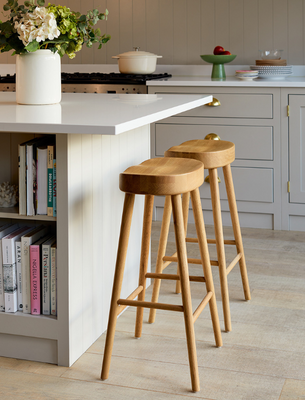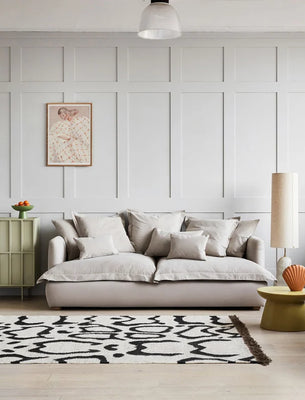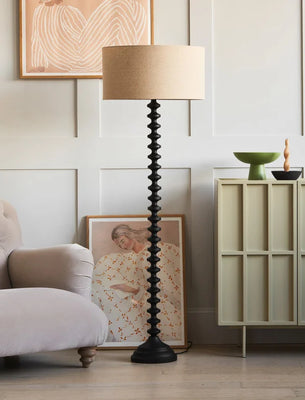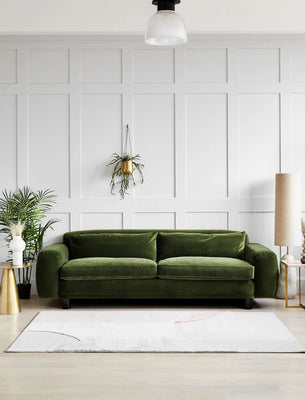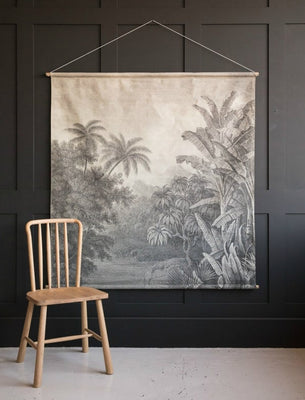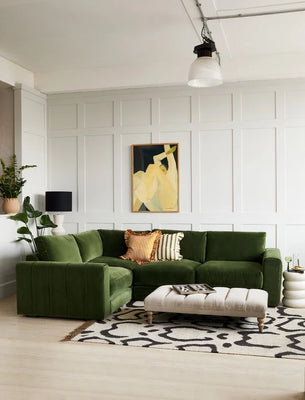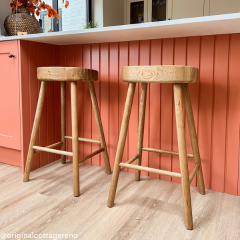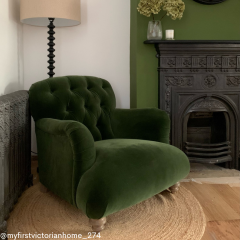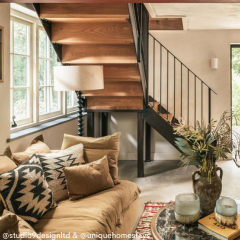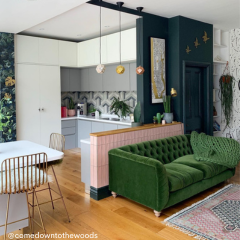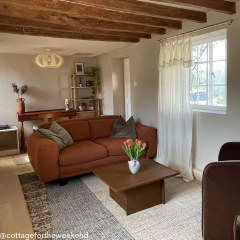Chances are that you’ve seen the words ‘Wabi Sabi‘ somewhere recently, but you may not know what they mean. Similar to when hygge hit the mainstream in 2016, Wabi Sabi is more of a lifestyle than a fleeting fad. It’s a Japanese concept based around finding the beauty in imperfections, embracing the ageing process and learning to love a simpler way of life. You can apply this concept to any part of your life, from your wardrobe to your beauty regime, but we’re particularly interested in its applications to interiors and homeware.

What does Wabi Sabi look like?
This is where it starts to get a bit tricky. Wabi Sabi is much more personal than simply copying a look that you see on Pinterest or Instagram. It isn’t a case of simply buying a couple of things and declaring yourself part of the trend. To truly embrace the lifestyle, you have to dig a little deeper and think about your entire mindset and how you live your life.
There is, however, a general ‘look’ that demonstrates the Wabi Sabi aesthetic. We’re talking about interiors here, so we’ll stick to what we know and allow you to discover the other strands of Wabi Sabi on your own. Our dedicated Pinterest board sums up the look quite well: neutral colours, natural materials and an unfinished aesthetic rather than an overly polished style. Rustic, handmade, uneven, unfinished, raw – all words that sum up Wabi Sabi.
Our favourite William Morris quote can also be applied here: “Have nothing in your home that you do not know to be useful or believe to be beautiful.” Wabi Sabi is all about living a simple life, free of unnecessary clutter. When you’re purchasing items for your home, ensure that they are either useful or that you are completely in love with them. Don’t fill your home with things that you’re unsure about.

How can I introduce Wabi Sabi to my home?
There are many ways that you can pick up on this trend for your home, whether you’d like to dip in your toes or dive in and completely revamp your life. Before completely refurbishing your home, we’d recommend trying out a few of the below suggestions for tapping into the trend.
Embrace raw plastered walls
Unfinished walls can look really stylish and perfectly encapsulate the Wabi Sabi philosophy of the beauty in imperfections. We’ve noticed a growing trend for these walls recently with grey concrete and natural pink plaster walls popping up all over social media. Back in September, we photographed our Christmas collection against the backdrop of a beautifully detailed raw plaster wall and were bombarded by comments from people asking where the wallpaper was from (it was just layers of old plaster!)
Shun perfection
If you look through our collections you will probably notice that this trend has been creeping up on us for a while. Deconstructed velvet armchairs, uneven ceramics, wonky tableware, handmade pots and rustic wooden spoons are all key features across the products we’ve been selling over the past six months and there’s more to come. Rather than opting for perfectly finished items that look mass-produced and ‘new’, embrace products with a handmade, more rustic finish.

Make do and mend
Kintsugi is another Japanese philosophy that links in well with Wabi Sabi. Have you ever seen pottery that features gold ‘cracks’? To briefly summarise, this is a 500-year-old practice that seeks to lengthen the lifespan of items by repairing them in a beautiful way rather than throwing them away if they break. Apply this to your own home by repairing things that break rather than replacing them. Also, look for items that already feature decorative cracks and blemishes.

Introduce natural materials
Natural materials such as wood, concrete, rope and wicker all instantly emit a Wabi Sabi aesthetic. Opt for an unfinished or slightly distressed look rather than heavily varnished or polished finishes. Anything that looks handmade works perfectly.

Need further inspiration?


